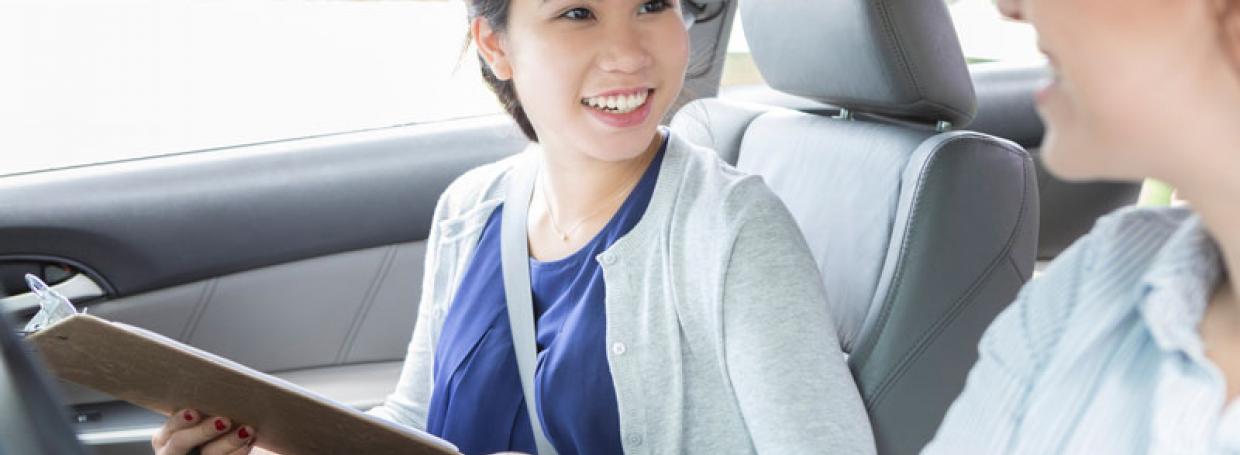Tips on preparing for your driving exams

After spending hundreds of dollars on theory and practical driving lessons, students must face one last obstacle before obtaining their official driver’s license. And that’s the Practical Driving Test (PDT)—or, as Singaporeans like to call, it ‘TP Test’ or Traffic Police Test. Many first-time applicants dread this test, especially since they don’t know exactly what to expect. Students do not know the exact route of the driving test, how the conditions of roads will be, the weather on that day, and how lenient or strict the tester is in docking off points.
But with theory tests cleared and many hours of practical driving under your belt, the car driving license test can almost be a walk in the park if you come mentally prepared. After all, with the cost of the test exceeding $200 (that’s $33 for the test itself and additional charges for the test vehicle rental and ‘warm-up’ session fee), the PDT is not cheap.
So here are some pointers that can help you in passing your driving test exam.
1. Choose a strategic timing for the test
By this time, you will have chosen one of the three official driving schools—Bukit Batok Driving Centre (BBDC), Comfort DelGro Driving Centre (CDC), or Singapore Safety Driving Centre (SSDC)—as your desired vicinity for your circuit test. But choosing a strategic timing for the test may help when you’re driving on the roads.
For example, roads can be congested during peak hours, especially if your test is within the Ubi and Bukit Batok area. So you may consider selecting test timings during non-peak hours. This way, you are faced with fewer distractions on the road when changing lanes and are less stressed out from manoeuvring among so many vehicles.
2. Switch off your handphone
Like any situation where you are being evaluated, first impressions are important. Be courteous to your tester, carry a positive attitude, and switch off your phone so you don’t get distracted. Since both of you will be sharing a confined space for 45 minutes or so, you don’t want your phone to go off. And of course, you should never violate driving rules related to handphone use, especially in front of the person who’ll determine the outcome of your test.
3. Be confident and calm
Before the driving test exam, keep distractions at bay and try to recall the pointers you’ve learnt during your practical and theory lessons. Once the test kicks off, there may be little time to think and only enough time to react.
Believe that your skills can carry you through the entire test. It’s normal to feel a little nervous, but don’t despair if you made a glaring mistake worthy of demerit points. Panicking over each mistake can cause your confidence to quickly plummet, and this may lead you to make more errors. Keep in mind that the aim is not to get a perfect score of zero but to not rack in more than 18 points.
4. Check blind spots
This is a tricky one because timing is key. Check your blind spot too early and you may be penalised; too late and you may get demerit points too. Overdoing it also means you’re taking your eyes off the road and not concentrating on what’s ahead. Remember to check your blind spot when making turns or reversing.
5. Watch for kerbs
Kerbs can be a nightmare for new drivers. Hitting a kerb can get you 10 demerit points and mounting one causes you to immediately fail the test. When parallel parking, vertical parking or mounting a slope, be especially careful and check that you’re a safe distance away from the kerb. Make adjustments if you find your car too close to one.
6. Give way to drivers
When driving on main roads, you’ll come across drivers of various driving styles and personalities, and this is a component of the test that evaluates your judgment. Defensive driving may be your best strategy, especially when encountering aggressive drivers. Play it safe, give way, and signal early whenever you can.
7. Be mindful of public transportation
But be careful not to follow too closely behind buses because they are on a schedule and can stop unexpectedly to cater to public transportation riders. Taxis or Grab cars are also either looking out for customers or looking for areas to drop them off, so take extra care when driving near these vehicles as they may stop abruptly and leave you with little time to react.
8. Don’t drive too slowly
Know the speed limit for different kinds of roads, such as highways and main roads, as well as areas around schools and pedestrian lanes. While exceeding the speed limit is an offence that leads to immediate failure, you also need to avoid going too slow as you can be penalised for doing so.
Ace your driving test
The bottom line is that you need to show that you can make correct judgments in various driving situations and follow the laws of the road. Be confident behind the wheel and make decisions that ensure your safety, as well as that of other road users and pedestrians. So keep these tips in mind and you may just be on your way to getting that driver’s license!
And once you’ve got that license, keep in mind the lessons you’ve learned. Select the car that suits your needs—if you haven’t done so already—and make sure you get car insurance to protect your finances should you ever find yourself in an accident.

